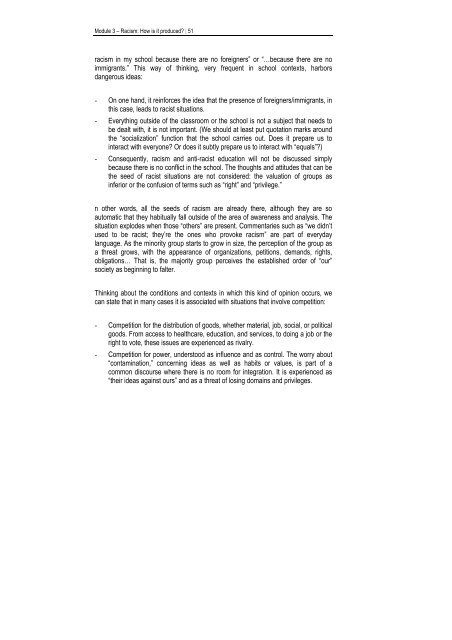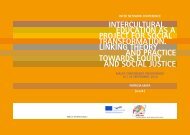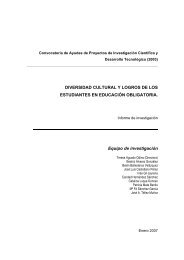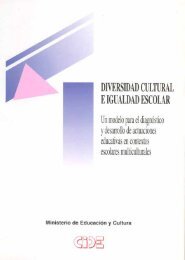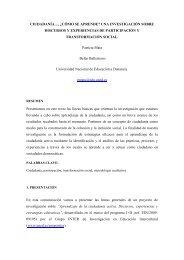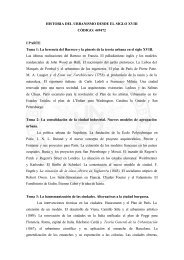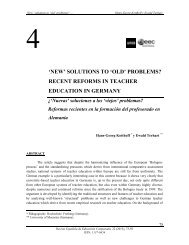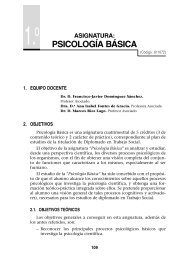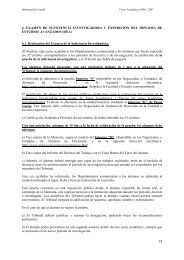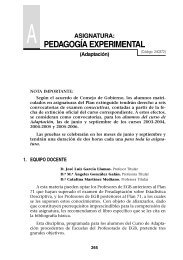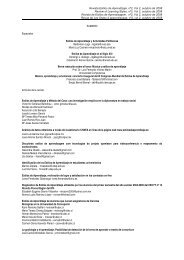Racism: What It Is and How to Deal with It - Uned
Racism: What It Is and How to Deal with It - Uned
Racism: What It Is and How to Deal with It - Uned
You also want an ePaper? Increase the reach of your titles
YUMPU automatically turns print PDFs into web optimized ePapers that Google loves.
Module 3 – <strong>Racism</strong>: <strong>How</strong> is it produced? | 51<br />
racism in my school because there are no foreigners” or “…because there are no<br />
immigrants.” This way of thinking, very frequent in school contexts, harbors<br />
dangerous ideas:<br />
- On one h<strong>and</strong>, it reinforces the idea that the presence of foreigners/immigrants, in<br />
this case, leads <strong>to</strong> racist situations.<br />
- Everything outside of the classroom or the school is not a subject that needs <strong>to</strong><br />
be dealt <strong>with</strong>, it is not important. (We should at least put quotation marks around<br />
the “socialization” function that the school carries out. Does it prepare us <strong>to</strong><br />
interact <strong>with</strong> everyone? Or does it subtly prepare us <strong>to</strong> interact <strong>with</strong> “equals”?)<br />
- Consequently, racism <strong>and</strong> anti-racist education will not be discussed simply<br />
because there is no conflict in the school. The thoughts <strong>and</strong> attitudes that can be<br />
the seed of racist situations are not considered: the valuation of groups as<br />
inferior or the confusion of terms such as “right” <strong>and</strong> “privilege.”<br />
n other words, all the seeds of racism are already there, although they are so<br />
au<strong>to</strong>matic that they habitually fall outside of the area of awareness <strong>and</strong> analysis. The<br />
situation explodes when those “others” are present. Commentaries such as “we didn’t<br />
used <strong>to</strong> be racist; they’re the ones who provoke racism” are part of everyday<br />
language. As the minority group starts <strong>to</strong> grow in size, the perception of the group as<br />
a threat grows, <strong>with</strong> the appearance of organizations, petitions, dem<strong>and</strong>s, rights,<br />
obligations… That is, the majority group perceives the established order of “our”<br />
society as beginning <strong>to</strong> falter.<br />
Thinking about the conditions <strong>and</strong> contexts in which this kind of opinion occurs, we<br />
can state that in many cases it is associated <strong>with</strong> situations that involve competition:<br />
- Competition for the distribution of goods, whether material, job, social, or political<br />
goods. From access <strong>to</strong> healthcare, education, <strong>and</strong> services, <strong>to</strong> doing a job or the<br />
right <strong>to</strong> vote, these issues are experienced as rivalry.<br />
- Competition for power, unders<strong>to</strong>od as influence <strong>and</strong> as control. The worry about<br />
“contamination,” concerning ideas as well as habits or values, is part of a<br />
common discourse where there is no room for integration. <strong>It</strong> is experienced as<br />
“their ideas against ours” <strong>and</strong> as a threat of losing domains <strong>and</strong> privileges.


